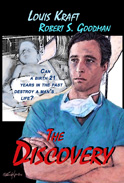
 |
Harry Chapman is a young obstetrician whose career is on the rise after just a few short years. Talented at his job and willing to donate his time to teaching hospitals, his track record is spotless until the night when Laura Smith goes into labor. She gives birth to a premature baby she intends to put up for adoption, but the newborn is not breathing when he is delivered. Dr. Chapman orders that the baby be put in an incubator; but when it doesn’t seem to help, he orders maximum oxygen, which has recently been discovered to cause blindness in children. The nurses comply against their better judgement, and, surely enough, the baby goes blind. Now an adult and a paralegal, Greg Weston learns that malpractice is the reason for his blindness, and he intends to sue.
This story begins in the 1950s and carries on into the 70s, setting up the conflict and the characters in the first two acts before delving into the centerpiece court scenes. The primary themes deal with the way that even actions and decisions made with the best of intentions can have serious, long-term consequences to them–from Dr. Chapman’s attempts to save a child’s life, to his nurse’s tampering with records in an effort to spare Chapman from the very thing that threatens to swallow him two decades later. With the kind of constant legal intensity readers expect from an author like John Grisham, along with the real-world medical expertise brought to the story by one of the two authors, the suspense of seeing everything unfold should keep readers captivated and always ready for another chapter.